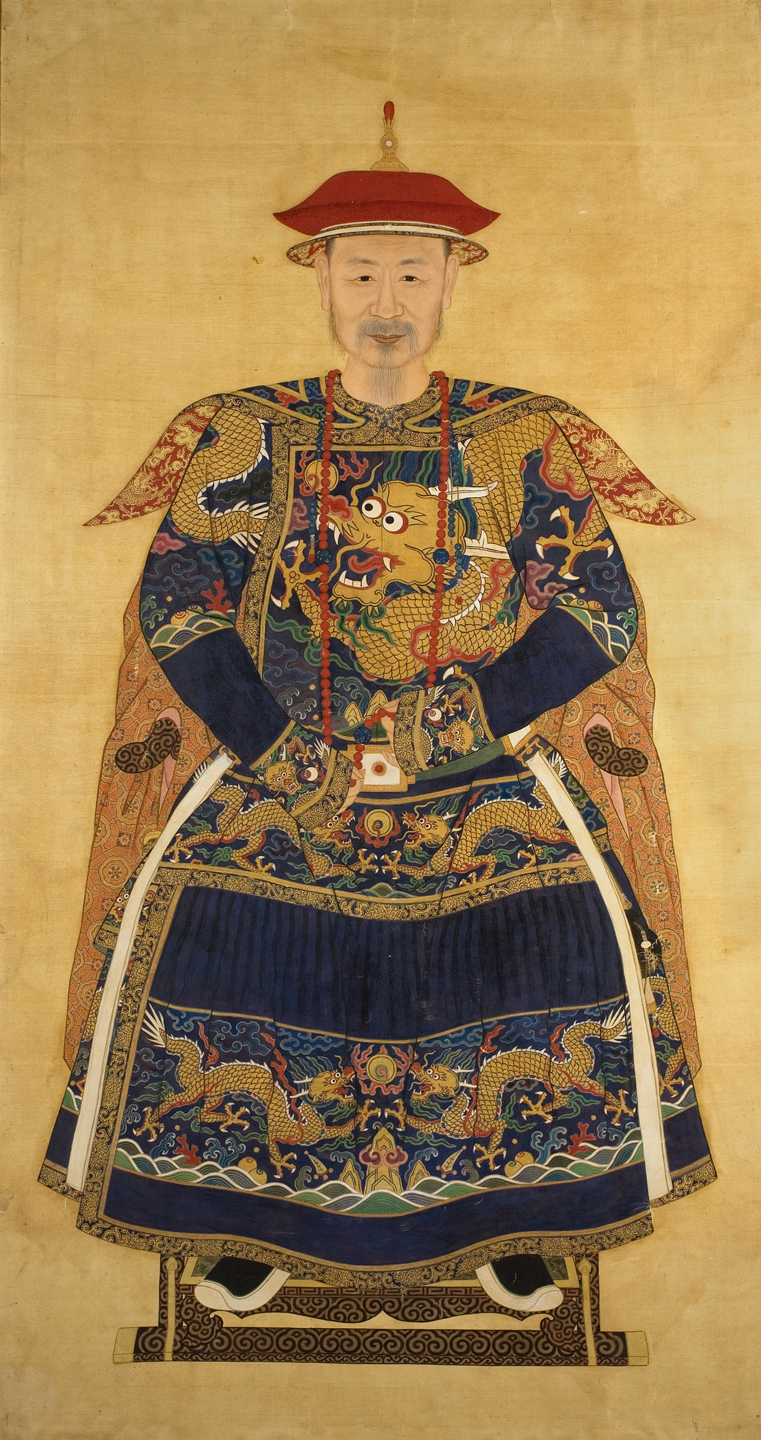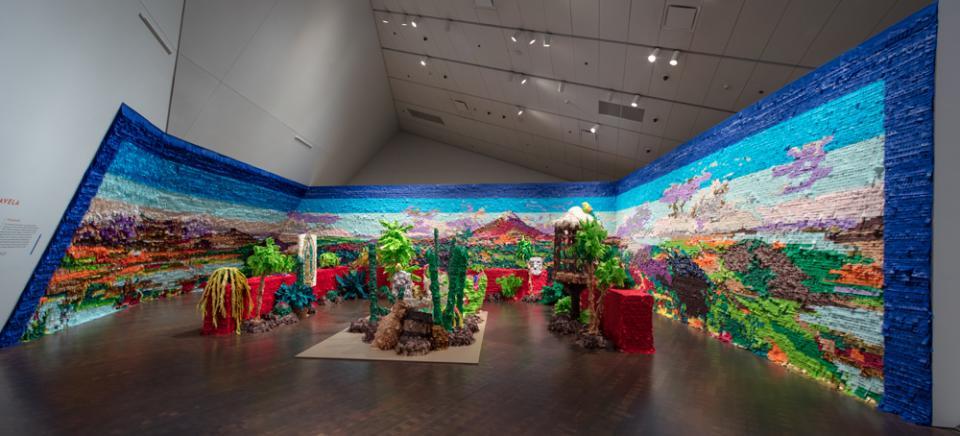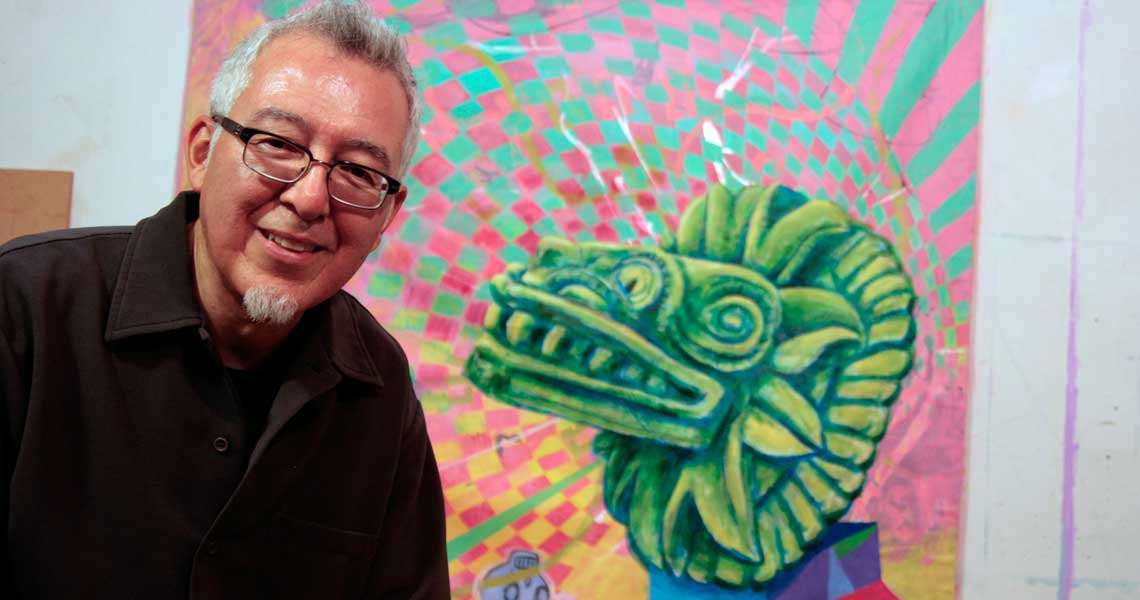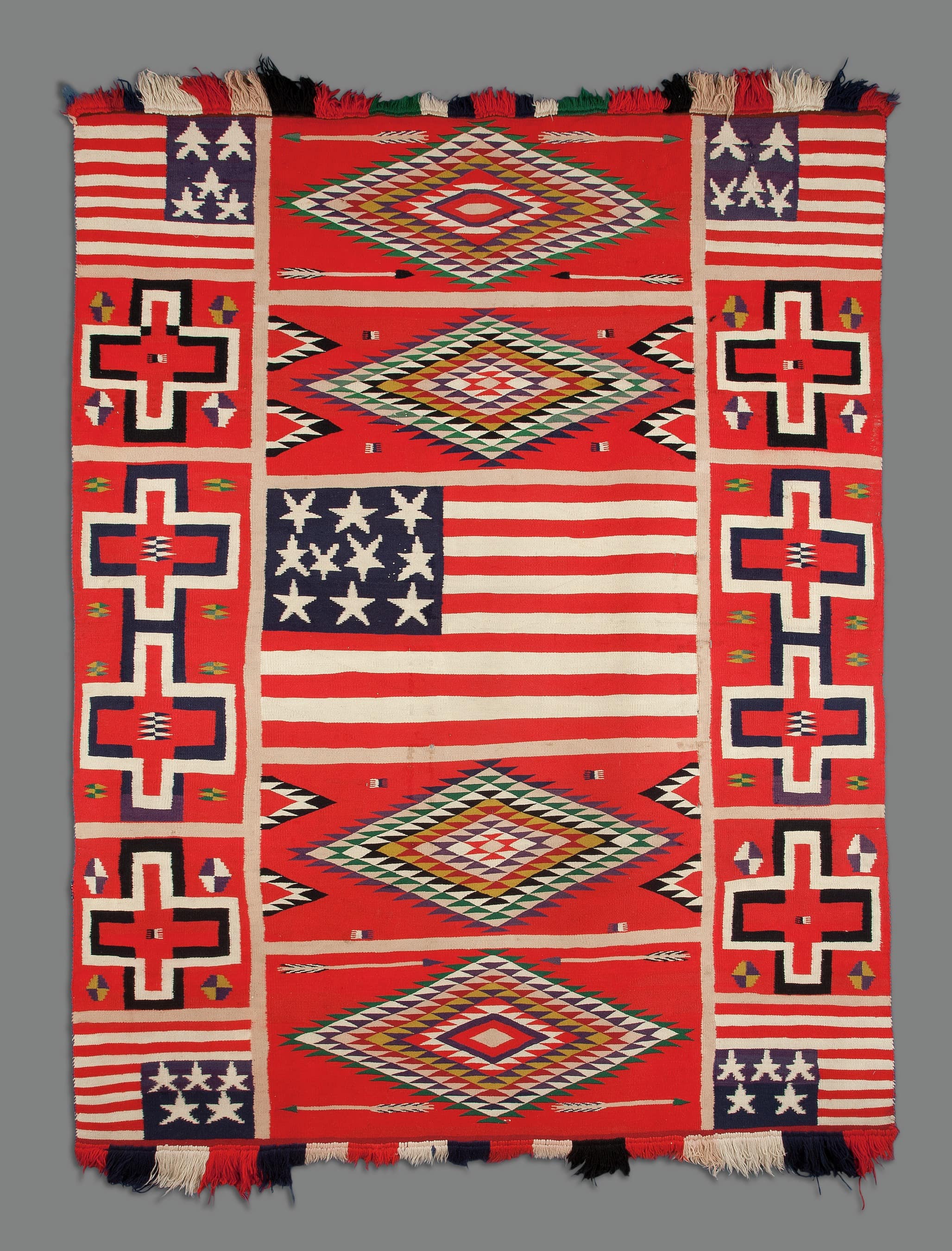In this lesson children will investigate elements of Rodeo-Pickup Man and participate in activities related to the painting. They will explore sound, color, and their imaginations; and will make their own paintings to share with the class.
Students will be able to:
- identify at least three colors in the painting;
- spot and point out the “secret” of the painting (i.e. the horse’s missing leg);
- feel comfortable making horse sounds; and
- use their imaginations to state what the riders and horses in the painting might be thinking.
Lesson
- Warm-up: Play some classic western music and have the children gallop around the room like horses. Model for those children who may not know about horses or how they move. Encourage them to make sounds that a horse might make while they are galloping around.
- Show the children the painting Rodeo-Pickup Man and discuss its subject matter.
- Have the children count colors, horses, riders, legs, ears, hats, eyes, textures/brushstrokes (important for paintings they will make later). Talk about how many horse legs they should see, compared to how many the artist actually painted. See if they can spot where the missing leg should be. Allow everyone an opportunity to point out where the leg is missing.
- Ask children what sounds they would hear if the action in the painting were happening in front of them. Have them make the sounds using different objects in the classroom and their voices.
- Inviting the children to use their imaginations, ask them: What might the horses be saying in this scene; the riders? Allow everyone to share different ideas.
- Have children paint their own horses, encouraging them to use different strokes and colors. Share that all of their horses will look very different from those in the painting and their classmates’ because they all see and paint horses differently. All they need to be able to do is describe their horse and what it’s doing when they are done.
- Give children an opportunity to present their paintings to the class and talk briefly about the different colors, brush strokes, and stylistic choices they made.
Materials
- Classic western music and means to play it
- Assorted objects with which the children can make different sounds (e.g. blocks, coconut halves)
- Assorted colors of paint
- Paint brushes of different sizes and textures
- Paper on which children can paint
- About the Art section on Rodeo-Pickup Man
- One color copy of the painting for every four children, or the ability to project the image onto a wall or screen
Standards
- Visual Arts
- Invent and Discover to Create
- Observe and Learn to Comprehend
- Relate and Connect to Transfer
- Language Arts
- Oral Expression and Listening
- Critical Thinking & Reasoning
- Information Literacy
- Invention
- Self-Direction
Rodeo-Pickup Man
- Frank Mechau, American, 1904-1946
- Born: Colorado
- Work Locations: Denver, CO, Colorado Springs, CO
Frank Mechau [MAY-show] was born in 1904 and grew up in Glenwood Springs, Colorado. He worked for the railroad and as a cattle hand, and later received a boxing scholarship at the University of Denver, which helped finance his art studies. After traveling to Europe to study art, Mechau returned to Colorado. “America is the place for American artists,” he said. Mechau taught art at various places in Colorado, including his own Mechau School of Modern Art in downtown Denver. In 1934, he received his first of many government commissions to create murals (his first mural is located in the Denver Public Library). Mechau settled with his family in Redstone, Colorado, in 1937, where he continued to teach and paint. He died suddenly at the age of 42.
Mechau was well-recognized as a mural painter and has either murals or paintings in 48 states. He worked very slowly, with painstaking precision. Using countless sketches, he recomposed and resized his forms many times. Mechau’s representation of the West combined traditional subjects with simplified forms and a modern style.
Mechau felt that the West held the best possible subject matter for his art. “Sports, mountains, canyons and the history of the West, of which Colorado has more than her share, are subjects from which I hope to fashion [my art],” he said. This painting has a Colorado setting, with mountains along the horizon. Mechau was also inspired by the energy and beauty of horses, a common source of dynamic form and movement in his paintings.
While studying in Paris, Mechau was influenced by cubism, with its simplified, geometric shapes, and by artists like Picasso. For his own works, Mechau took cues from his studies in Europe and the many hours he spent scouring museums. Vibrant colors, which he may have admired in works of European art from the 1200s, along with strong, clean lines, influenced by Chinese and Japanese paintings, help express Mechau’s great adoration for the West.
Details
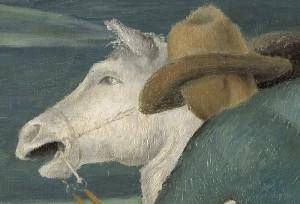
Who’s Got a Face
Mechau loved horses and spent a lot of time observing them and making sketches, trying to capture their spirit and beauty. Notice that there are no facial features shown on any of the riders. Mechau created much more definition for the horses’ faces than those of their riders.
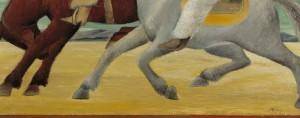
Missing Legs
A quick leg count reveals how Mechau manipulated his subjects, overlapping figures to read as one form. While the gray and brown horses seem to have all of their legs, the white horse’s legs are not shown.
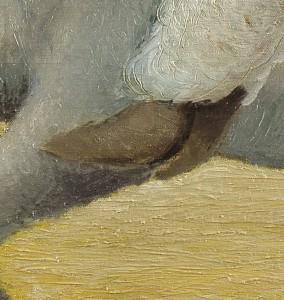
Smooth Lines
Mechau created smooth lines by combining the edges of his forms. Notice how he positioned the cowboy boots so they fall inside the shape of the horse.
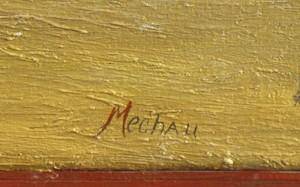
Color
To put more emphasis on the horses, the shirts of the riders blend in with the sky. A triangle of the primary colors is displayed with the red and yellow saddle blankets of the horses and the blue shirt on the third rider. A touch of the same red from one saddle blanket is used to highlight the artist’s signature at the bottom.
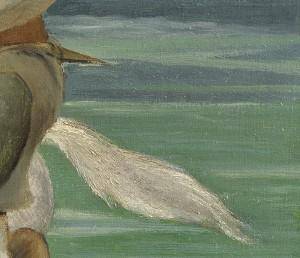
Repetition
Shapes and lines repeat throughout the painting. Wispy horizontals define the scarf, clouds, and horse tail. Circles are repeated on the chap buttons, horse bit, and bridle joint.
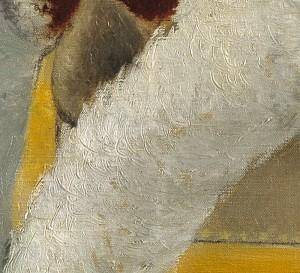
Textures
Looking closely, you can see different textures Mechau created with the paint. The ground looks rough in comparison to the sky because the paint is thicker. The tail looks hairy, the horse’s body seems furry, and the chaps appear fluffy.
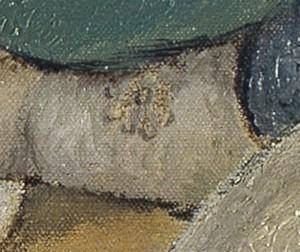
Small Details
Although Mechau simplified his forms, he also included some small details. While the body of one rider is almost completely hidden, you can see his arm, wrapped around another rider, with a tiny flower on his cuff. Other small details include fringes on the brown chaps and a star on one of the saddles.
Funding for object education resources provided by a grant from the Morgridge Family Foundation. Additional funding provided by the William Randolph Hearst Endowment for Education Programs, and Xcel Energy Foundation. We thank our colleagues at the University of Denver Morgridge College of Education.
The images on this page are intended for classroom use only and may not be reproduced for other reasons without the permission of the Denver Art Museum. This object may not currently be on display at the museum.

